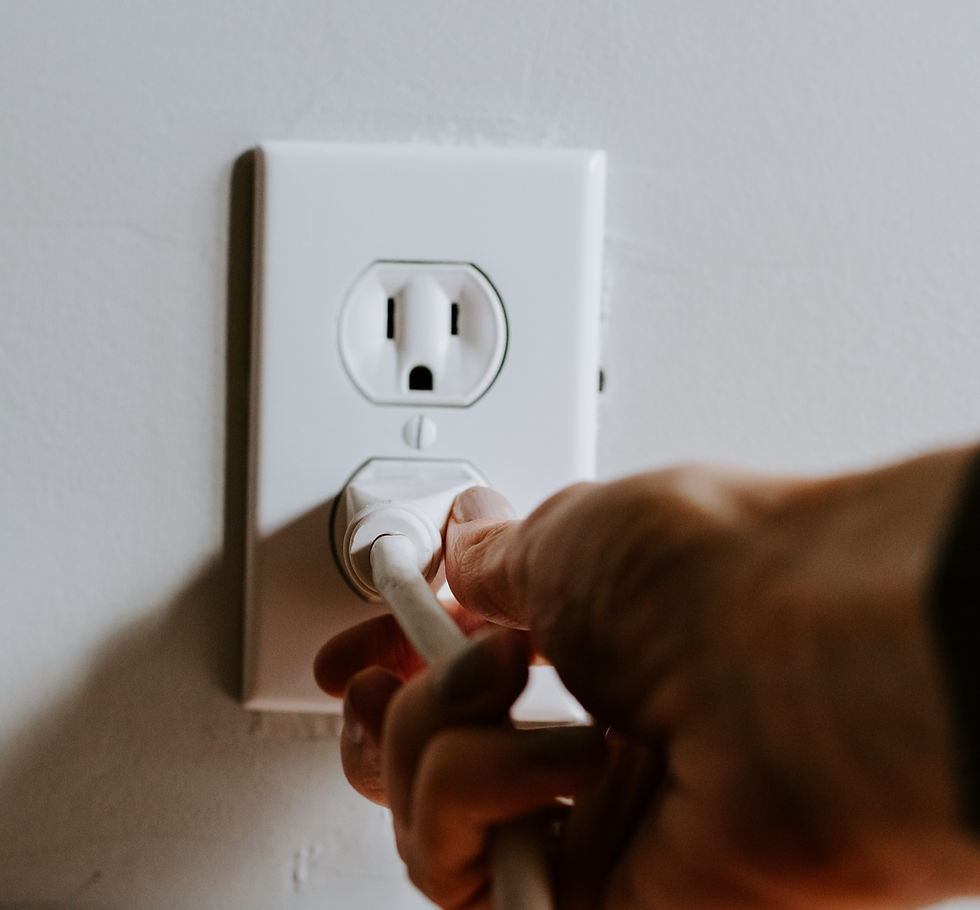Can an Outlet Go Bad? Signs, Fixes, and Safety Tips ⚡
- Riley Thorne

- Sep 10
- 3 min read
Electrical outlets are essential for every home, but like any other component, they don’t last forever. Many homeowners ask: can an outlet go bad? The answer is yes—and when it does, it can lead to frustrating power issues or even safety hazards.
Outlets can wear out over time due to heat, loose wiring, or internal damage, leading to failure or dangerous electrical risks.
In this article, we’ll explain why outlets fail, what to do when a power outlet is not working, and even touch on style upgrades like glass outlet covers that combine safety with aesthetics.

Can an Outlet Go Bad?
Yes, outlets can and do fail. They aren’t designed to last forever, especially in high-use areas like kitchens, living rooms, and bathrooms. Some common reasons include:
Wear and tear – Plugging and unplugging cords weakens the outlet’s grip.
Heat damage – Overloaded circuits generate heat that degrades internal parts.
Loose wiring – Causes intermittent power loss or sparks.
Moisture exposure – Especially in bathrooms or kitchens, moisture can corrode outlets.
Pro Tip: Most outlets last 15–25 years, but heavy use or poor wiring can shorten their lifespan.
Signs an Outlet Is Going Bad
Here are key red flags to watch out for:
Burn marks or discoloration.
Cracks on the outlet faceplate.
Warm or hot to the touch.
Buzzing or sparking sounds.
Devices not charging or staying loose in the outlet.
If you notice any of these, replace the outlet immediately to prevent electrical fires.
What to Do If a Power Outlet Is Not Working
When a power outlet is not working, it doesn’t always mean the outlet has failed. Try these steps first:
Check other outlets – The circuit breaker may have tripped.
Reset GFCI outlets – Bathrooms, kitchens, and outdoor areas often use GFCIs that trip for safety.
Test with another device – Rule out a faulty charger or appliance.
Inspect for damage – Burn marks or cracking indicate replacement is needed.
If none of these solve the problem, the outlet itself may be bad and should be replaced by a qualified electrician.
Glass Outlet Covers: A Stylish Safety Upgrade ✨
While dealing with outlet function, don’t forget about outlet safety and design. Glass outlet covers are a sleek alternative to traditional plastic ones.
Benefits include:
More durable and scratch-resistant.
Easier to clean and maintain.
Adds a modern, upscale look to any room.
They don’t prevent outlets from going bad, but they can make replacements more stylish.
FAQ: Outlet Issues
Can an outlet go bad?
Yes—outlets wear out from heat, age, or wiring issues and eventually stop working.
What should I do if a power outlet is not working?
Check breakers, reset GFCIs, and test devices. If still dead, the outlet likely needs replacement.
Are glass outlet covers safe?
Yes—they’re as safe as traditional covers and more durable, offering both protection and style.
How long do outlets last?
Most outlets last 15–25 years, but heavy use or damage can shorten their lifespan.
When should I call an electrician?
If you see burn marks, hear buzzing, or the outlet feels hot, call a professional immediately.
Conclusion
So, can an outlet go bad? Absolutely. Outlets fail from age, wear, and electrical stress. If your power outlet is not working, start with simple checks like breakers and GFCI resets before assuming it’s dead. And when replacing outlets, consider upgrading with stylish glass outlet covers for durability and design.
Staying alert to warning signs ensures both safety and convenience in your home. ✅



Comments